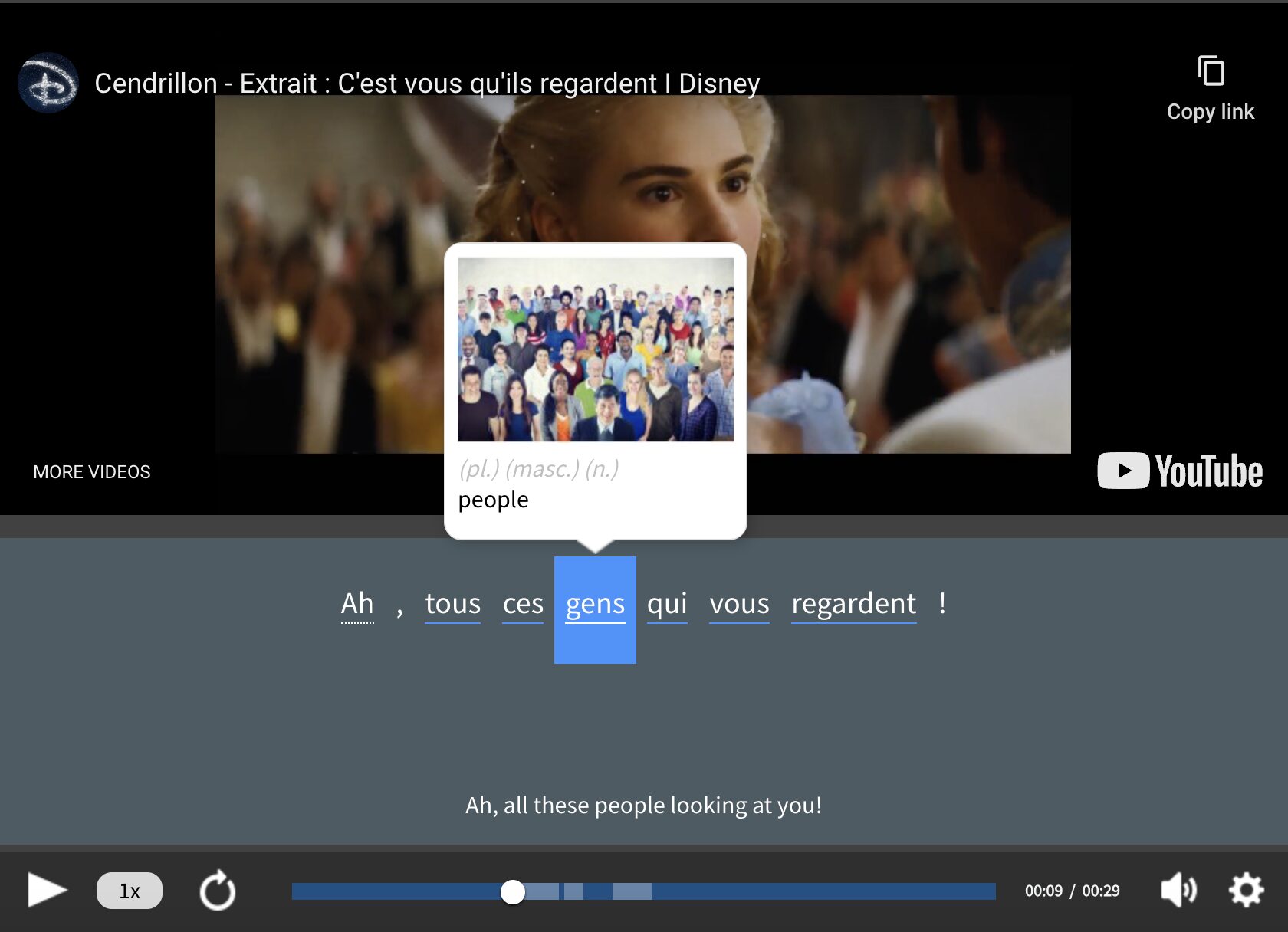Contents
- Numbers 1 to 19 in French
- Numbers 20 to 69 in French
- Numbers 70 to 79 in French
- Numbers 80 to 99 in French
- Numbers Beyond 100 in French
- Ordinal Numbers in French
- French Gender and Number Agreement
- When to Use Hyphens for Numbers in French
- Percentages and Fractions in French
- Basic Math in French
- Dates in French
- How to Practice Counting in French
- And One More Thing...
How to Count in French: Numbers 0-1,000 and Beyond

If your goal is to become conversationally fluent in French, you have to learn French numbers. Think of all the times you hear or read numbers daily in English. They’re everywhere—on the news, in stores, on your phone, etc.
In this blog post, you’ll learn French numbers from 1 to 1,000 and beyond. Plus how to count in French like a native.
Download: This blog post is available as a convenient and portable PDF that you can take anywhere. Click here to get a copy. (Download)
Numbers 1 to 19 in French
After zéro (0), you could probably already name some of the first 19 numbers:
- un — 1
- deux — 2
- trois — 3
- quatre — 4
- cinq — 5
- six — 6
- sept — 7
- huit — 8
- neuf — 9
- dix — 10
- onze — 11
- douze — 12
- treize — 13
- quatorze — 14
- quinze — 15
- seize — 16
- dix-sept — 17
- dix-huit — 18
- dix-neuf — 19
The number 17 in French is literally “ten-seven”, 18 is “ten-eight” and so on.
Numbers 20 to 69 in French
The numbers between 20 and 69 follow the same pattern as the first 19 numbers, but we need to memorize each multiple of 10 first:
The nine numbers following each of those use a similar pattern. So for numbers 20 to 30, we have:
- vingt — 20
- vingt-et-un — 21
- vingt-deux — 22
- vingt-trois — 23
- vingt-quatre — 24
- vingt-cinq — 25
- vingt-six — 26
- vingt-sept — 27
- vingt-huit — 28
- vingt-neuf — 29
This is true for all numbers up to 69.
For example:
35 — trente-cinq
French accepts both hyphens and no hyphens in numbers, so some people would write 21 as vingt et un.
To be consistent, I’m following the Rectifications orthographiques du français en 1990, which recommends putting a hyphen between each digit of a number.
The only exception: million is never hyphenated.
Special cases: 21, 31, 41, 51, 61
Did you notice anything strange in the numbers above? Most—though not all—numbers above 20 that end in “one” include et (and) between the two digits.
For example:
21 — vingt-et-un (literally: twenty-and-one)
41 — quarante-et-un (literally: forty-and-one)
Numbers 70 to 79 in French
70 in French is literally “sixty-ten,” soixante-dix . The numbers from 70 to 79 follow this pattern, meaning 71 is “sixty-eleven,” 72 is “sixty-twelve,” and so forth.
Take a look:
- soixante-dix — 70
- soixante-et-onze — 71
- soixante-douze — 72
- soixante-treize — 73
- soixante-quatorze — 74
- soixante-quinze — 75
- soixante-seize — 76
- soixante-dix-sept — 77
- soixante-dix-huit — 78
- soixante-dix-neuf — 79
Note: the numbers up to 69 are the same everywhere, but in Belgium and Switzerland, 70 is called septante . For example:
75 — septante-cinq
Numbers 80 to 99 in French
If that wasn’t crazy enough, we say quatre-vingts , or “four twenties” for 80.
- quatre-vingts — 80
- quatre-vingt-un — 81
- quatre-vingt-deux — 82
- quatre-vingt-trois — 83
- quatre-vingt-quatre — 84
- quatre-vingt-cinq — 85
- quatre-vingt-six — 86
- quatre-vingt-sept — 87
- quatre-vingt-huit — 88
- quatre-vingt-neuf — 89
For numbers 80-89, Belgium follows the French method quatre-vingts, but Switzerland uses either octante or huitante , depending on the region.
So in Switzerland, 85 would be…
In the next set of numbers, we continue with our same base of 80, rather than a new word for “ninety.” This means the number 90 will literally be “eighty-ten,” 91, “eighty-eleven,” etc.—just like with the 70s.
- quatre-vingt-dix — 90
- quatre-vingt-onze — 91
- quatre-vingt-douze — 92
- quatre-vingt-treize — 93
- quatre-vingt-quatorze — 94
- quatre-vingt-quinze — 95
- quatre-vingt-seize — 96
- quatre-vingt-dix-sept — 97
- quatre-vingt-dix-huit — 98
- quatre-vingt-dix-neuf — 99
Note that although 71 is written soixante-et-onze (with et), 81 and 91 are not:
Lastly, for 90-99, both Belgium and Switzerland use nonante . So nonante-cinq means 95.
These counting methods are also used locally in parts of France near Belgium or Switzerland.
Numbers Beyond 100 in French
- cent — (one) hundred
- mille — (one) thousand
- dix-mille — 10 thousand
- cent-mille — (one) hundred thousand
- (un) million — (one) million
- (un) milliard — (one) billion
- (un) billion — (one) trillion
- (un) billiard — (one) quadrillion
I think cent and mille are the most interesting.
Think of all the words in English that stem from these:
percent
centennial
century
millenium
millipede
With this knowledge, we can say complex numbers.
For example, the number 2,376,974 is deux millions trois-cent-soixante-seize-mille-neuf-cent-soixante-quatorze , always reading left to right.
Here it’s broken down into smaller parts, so you can see how I group together the millions, thousands and hundreds when saying the number:
2 376 974 — deux millions (two million)
2 376 974 — trois-cent-soixante-seize-mille (three hundred seventy-six thousand)
2 376 974 — neuf-cent-soixante-quatorze (nine hundred seventy-four)
Decimals and commas
For large numbers in French, groups of three numerals are usually separated by spaces. The English number 50,000 would thus be written as 50 000.
In France, the decimal is replaced with a comma. For example, 3.5 (three and a half) would be written as 3,5 in French and called trois virgule cinq .
Ordinal Numbers in French
Ordinal numbers in English are “first,” “second,” “third,” etc. These are pretty straightforward in French.
Apart from premier / première (first), you tack on –ième to a number to turn it into an ordinal number.
For example:
2nd — deuxième
3rd — troisième
24th — vingt-quatrième
Apart from premier, these are gender-neutral.
French Gender and Number Agreement
A number ending in one can agree in gender with whatever it’s modifying.
So the story “1,001 Nights” is translated as “ Mille-et-une Nuits ” since nuit is feminine.
If un (one) is the last word in a phrase, it doesn’t agree in gender with the preceding noun. For example:
la page un — page one
While these rules can be tricky, the best way to learn them is through repetitive memorization and immersing yourself in the French language.
Numbers come up in conversations all the time, so listening and looking for them in French subtitles of media is an excellent way to get accustomed to them. And thanks to technology, you can easily do so with platforms like YouTube and Netflix.
And it’s even easier with FluentU.
FluentU takes authentic videos—like music videos, movie trailers, news and inspiring talks—and turns them into personalized language learning lessons.
You can try FluentU for free for 2 weeks. Check out the website or download the iOS app or Android app.
P.S. Click here to take advantage of our current sale! (Expires at the end of this month.)
When to Use Hyphens for Numbers in French
Hyphens connect the digits of numbers 17-99 in French. The only exception is whole tens.
Numbers 17-19 have a hyphen between dix and the single digit (sept, huit or neuf).
Numbers 21-69 have a hyphen between the tens and ones (except for when they’re whole tens, such as “thirty” or “forty”). For example, vingt-et-un (21).
71-99 also have three hyphens.
Percentages and Fractions in French
The word for percentage in French is “pour cent.” For example:
23% = vingt-trois pour cent
50% = cinquante pour cent
100% = cent pour cent
To talk about fractions, you need to use ordinal numbers for the denominator. Cardinal numbers are the numerator.
Here’s some basic vocabulary to help you with this:
Une demi / Une moitié — a half, one half
Un tiers — one-third
Un quart — one-fourth
Deux tiers — two-thirds
Trois quarts — three-fourths
Deux cinquièmes — two-fifths
Trois huitièmes — three-eighths
Deux et demi / Deux et une demi — two and a half
Basic Math in French
Doing basic math is pretty straightforward in French. Here are a few basic vocab words you’ll need:
Ajouter — to add
Plus — plus
Égal (e)(s) — equals
Soustraire — to subtract
Moins — minus
Multiplier — to multiply
Fois — times
Diviser — to divide
Divisé par — divided by
Dates in French
French dates follow the format of “day of the week, the day of the month, month, year.”
But the format is usually “day + number + month + year” in writing and speaking.
Finally, the preposition le is used before the day and the number.
For example:
le 14 février 2023 = February 14, 2023
le 1er mars 2023 / le premier mars 2023 = March 1, 2023
Years in French are read as full numbers. This is different from English, where the year is often split into two parts.
1999 = mille neuf cent quatre-vingt-dix-neuf
2023 = deux mille vingt-trois
How to Practice Counting in French
- Anytime you deal with numbers, think of them in French. I do this instinctively. If I check the time, I say to myself, “ Il est huit heures. “ (It’s 8 a.m.) If I have to count something, I do it in French. So a recipe doesn’t call for 10 eggs, it calls for une dizaine d’œufs !
- Watch French documentaries. Documentaries abound in numbers, usually complicated ones featuring growth or decline over time and lots of different years. Try to watch documentaries like this and write out any numbers they mention.
- Learn math in French. If you like math, YouTube and the Internet in general have great resources geared for French math students that would not only make you work with numbers but also teach you the vocab used in French mathematics.
- Take online quizzes. Quizzes are an oldie but goodie, and there are many options online. For instance, Sporcle, an entertainment trivia website, offers a timed quiz on French numbers 1-20 and each subsequent tens set (30, 40, 50, etc.) up to 100. Quizlet is another popular option, offering quizzes plus flashcards and games.
- Practice French numbers in context. Grab a partner and delegate one person to play the role of the shopkeeper and the other to act as the customer. If you don’t have a partner, don’t sweat it—play both parts (or find one using a French language exchange app).
- Apply your numbers knowledge to money. Dealing with money is something you already do every day in English, and you’ll do it while abroad in a French-speaking country. Familiarize yourself with the euro and learn how to form sentences with French numbers and currency. YouLearnFrench has a great video that simulates an exchange between a shopper and an employee at the grocery store.
French numbers can be puzzling even to advanced students, yet learning them is a rewarding experience that will put another piece of the French puzzle into place.
So get counting!
Download: This blog post is available as a convenient and portable PDF that you can take anywhere. Click here to get a copy. (Download)
And One More Thing...
If you like learning French at your own pace and from the comfort of your device, I have to tell you about FluentU.
FluentU makes it easier (and way more fun) to learn French by making real content like movies and series accessible to learners. You can check out FluentU's curated video library, or bring our learning tools directly to Netflix or YouTube with the FluentU Chrome extension.
One of the features I find most helpful is the interactive captions—you can tap on any word to see its meaning, an image, pronunciation, and other examples from different contexts. It’s a great way to pick up French vocab without having to pause and look things up separately.
FluentU also helps reinforce what you’ve learned with personalized quizzes. You can swipe through extra examples and complete engaging exercises that adapt to your progress. You'll get extra practice with the words you find more challenging and even be reminded you when it’s time to review!
You can use FluentU on your computer, tablet, or phone with our app for Apple or Android devices. Click here to take advantage of our current sale! (Expires at the end of this month.)











